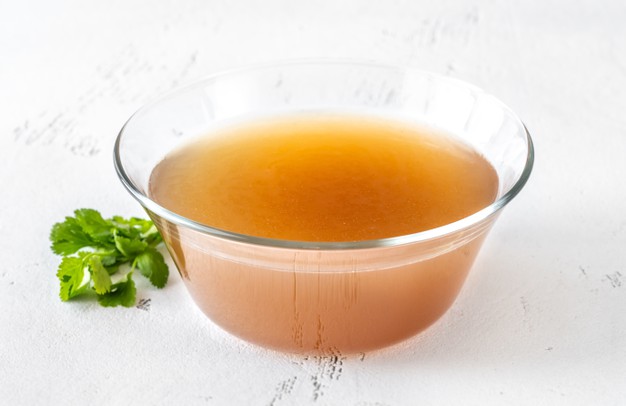Fig is a delicious savory fruit belongs to mulberry family. Fig can be consumed in fresh form as well as in dried form. Both of the figs are extremely nutritious and contain significant amount of fibre, antioxidants and micronutrients. Dried fig has been traditionally used for various medicinal purposes.
Differences between fresh fig and dried fig
Fresh fig is a seasonal fruit and mainly available in the Western part of Asia, whereas dried fig is available though out the year everywhere in the country. There are several differences between these two forms. Below points will give an overview of their difference –
- Dried fig contains comparatively more sugar, calories, fibre, vitamins and minerals than fresh fig, whereas fresh fig is relatively richer in Vitamin C than dried fig as there is loss of some water soluble vitamins occur during the drying process
- Dried fig contains pectin that help in reducing blood cholesterol concentration
- Dried fig contains relatively higher amount of antioxidants and phenolic components than fresh fig
- Dried fig also contains comparatively higher amount of potassium than fresh fig. Due to its high potassium content it is widely used as an important remedial action for hypertension
Nutritional profile
- It contains desirable amount of carbohydrates and contains sugar as well
- It is also rich in dietary fibre
- It contains protein too. It is consisting of various important amino acids
- It contains lesser amount of fat as well. It is composed of both saturated and unsaturated fat but totally free from cholesterol
- It provides desirable amount of energy on its oxidation
- It is packed with several important micronutrients, which include Vitamin C, Vitamin K, Vitamin B1, B2, B3, B6, B9, choline, calcium, phosphorus, potassium, zinc, selenium, copper, magnesium and manganese
- It also contains various important plant components, which include epicatechin gallate, quercetin, antioxidants and kaempferol, all of these components play vital role in exerting various nutraceutical activities


Biological activities
Antioxidant activity
- It is packed with antioxidants that help in neutralizing free radicals thus help in protecting the body from their harmful consequences
- It is also associated with preventing cellular damages by decreasing oxidative stress hence helps in sustaining cellular functionality that ultimately helps to promote overall wellbeing
Anti-inflammatory activity
- It contains various important plant compounds that exert anti-inflammatory activity and helps in decreasing the concentration of inflammatory markers within body, which helps in preventing inflammation
- It plays significant role in delaying the onset of inflammatory events within body thus helps in decreasing the prevalence of chronic inflammatory diseases
- It also helps in preventing joint swelling and helps to improve joint health too thus its consumption is thought to be very effective for improving the symptoms of arthritis

Anti-carcinogenic activity
- It contains various important nutrients that exhibit potent anti-carcinogenic activity and reduces the prevalence of various cancers
- Its oxidative stress reducing capacity is also responsible for decreasing the susceptibility of carcinoma
Hypotensive activity
- Its high potassium content makes it an imperative therapeutic substance for hypertension
- It helps to widen the blood vessels, which subsequently decreases high blood pressure
Hypolipidemic activity
- It exerts strong hypolipidemic activity and all the credit goes to its fibre content
- It helps in decreasing the concentration of LDL, VLDL and triglyceride in body thus its consumption is thought to be very effective for reducing total body fat percentages
Health benefits
Role on digestive health
- Consumption of dried fig is extremely helpful for improving the health and activity of digestive system
- Its fibre content is responsible for preventing constipation as fibre helps in increasing the bulkiness of stool and also makes the stool soft, which ultimately supports defecation
- Ficin is an enzyme found in dried fig, it also acts as laxative and helps to ease bowel movement thus promotes regularity
- It is also very effective for decreasing the prevalence of indigestion, diverticular disease, irritable bowel syndrome, ulceration and inflammatory bowel disease
- It helps to promote gut health as well

Role on skeletal system
- It contains significant amount of calcium, phosphorus, magnesium and potassium, all of these trace elements play vital role in maintaining a healthy skeletal system
- Its calcium and phosphorus content help in bone mineralization, which ultimately help in healthy bone formation and also increase bone mass as well as bone mineral density
- Its magnesium content helps in bone metabolism
- Its potassium content is also responsible for preventing calcium loss thus helps the body to utilize calcium properly, which ultimately promotes the growth and development of bone as well as teeth
- Its consumption is also very effective for improving the symptoms of osteoporosis
Role on weight management
- Though it contains desirable amount of carbohydrates and also provides pleasing calories on its oxidation still it is used as an important weight reducing aid due to its fibre content
- Fibre present in dried fig helps in providing a feeling of fullness over a long period of time by delaying stomach emptying as a result hinders appetite, which ultimately facilitates weight reduction by inhibiting excess calorie intake
- Whereas it should be consumed in restricted quantity and preferably in morning or in between morning meals so that the calories obtained from it can be burnt easily within the remaining part of the day


Role on memory
- Its high antioxidant components make it a supper food. It helps to reduce oxidative stress and also protects the brain from oxidative damages thus helps in promoting brain activity and improves memory as well
- It plays significant role in improving memory related behavioral deficits
- It helps to improve the symptoms of Alzheimer’s disease as well, by delaying the progression of plaque formation
Role on skin
- It helps in rejuvenating the skin and helps to provide the skin a radiant glow
- Its antioxidant activity helps to prevent premature aging
- Vitamin C present in dried fig helps in improving skin elasticity
- It also helps in decreasing the prevalence of dermal infections and also helps in strengthening natural defense activity of skin
Role on hair
- Its zinc and iron components play imperative role in promoting hair growth
- It helps to prevent hair loss as well
- It also helps to prevent dandruff

Therapeutic uses
It has been extensively used for various therapeutic purposes, like –
- It is widely used for boosting up the overall immunity of the body as it contains numerous immune boosting nutrients and plays significant role in lowering the susceptibility of becoming ill
- Its consumption is very effective for reducing the prevalence of respiratory disorders especially asthma, cough and bronchitis
- Its high fibre content, antioxidant components and micronutrient components make it an imperative cardio protective food. It helps to decrease the risk of developing atherosclerosis and coronary artery disease. It also helps in reducing the prevalence of heart attack and strokes
- It helps to improve the endothelial functionality as well
- Its Vitamin C content helps in wound healing
- It also helps in improving hepatic health and functionality
- It helps to promote the health and activity of connective tissue
- Its helps in reducing the prevalence of anemia
- It also helps in preventing erectile dysfunction
Risk factors
Due to its high calorie and carbohydrate contents, it’s over consumption may increase the risk of obesity and hyperglycemia thus it is better to consume it in moderation.


Source:
Bey, M.B. and Louaileche, H., 2015. A comparative study of phytochemical profile and in vitro antioxidant activities of dark and light dried fig (Ficus carica L.) varieties. The J. Phyto, 4(1), pp.41-48.
Chang, S.K., Alasalvar, C. and Shahidi, F., 2016. Review of dried fruits: Phytochemicals, antioxidant efficacies, and health benefits. Journal of Functional Foods, 21, pp.113-132.
Khadhraoui, M., Bagues, M., Artés, F. and Ferchichi, A., 2019. Phytochemical content, antioxidant potential, and fatty acid composition of dried Tunisian fig (Ficus carica L.) cultivars. Journal of Applied Botany and Food Quality, 92, pp.143-150.
Soni, N., Mehta, S., Satpathy, G. and Gupta, R.K., 2014. Estimation of nutritional, phytochemical, antioxidant and antibacterial activity of dried fig (Ficus carica). Journal of Pharmacognosy and Phytochemistry, 3(2).
Stover, E., Aradhya, M., Ferguson, L. and Crisosto, C.H., 2007. The fig: overview of an ancient fruit. HortScience, 42(5), pp.1083-1087.









